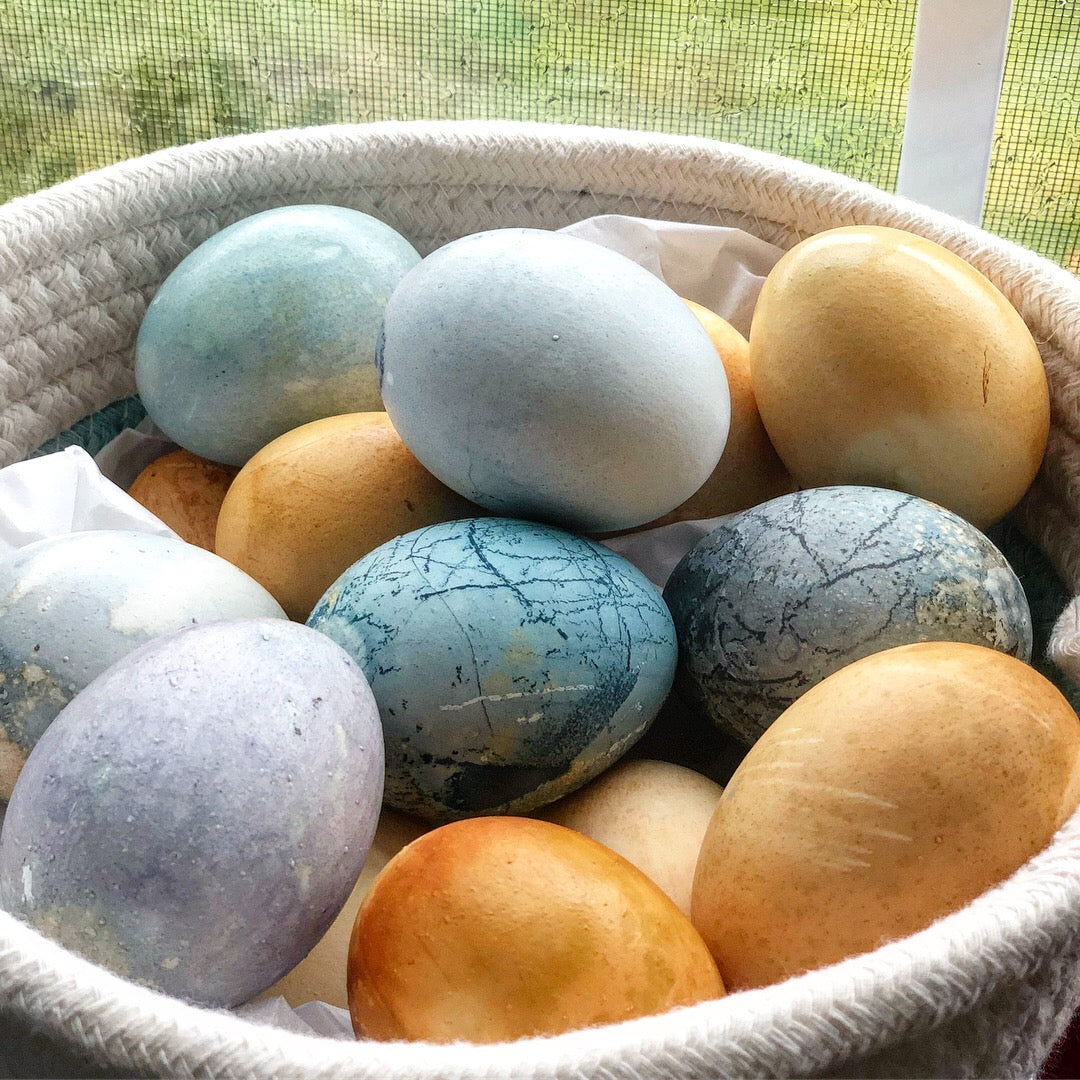With Easter just around the corner, many of us are looking for unique and natural ways to decorate our Easter eggs. Ditching the traditional chemical dyes in favor of something more natural not only benefits the environment but can also add an old-world charm to your Easter celebrations. One such method is using tea to dye your Easter eggs. This method is not only natural and eco-friendly, but it also gives your eggs a beautiful, earthy palette that stands out from the usual bright colors. Here’s a step-by-step guide to dyeing Easter eggs using tea.
Materials Needed:
- White eggs (hard-boiled or blown-out)
- A variety of teas (black tea, green tea, chamomile, hibiscus, etc.)
- Water
- Vinegar
- Non-metallic pots or jars
- Slotted spoon
- Cooling rack or carton for drying

Instructions:
-
Prepare Your Eggs: Start with clean, hard-boiled eggs. Make sure they are cooled and dry. If you're using blown-out eggs, ensure they are thoroughly emptied and cleaned.
-
Brew Your Tea: In separate pots or heat-safe jars, brew the teas you have chosen. The stronger you brew the tea, the deeper the dye. For a standard size cup (about 250ml), use 3 to 4 tea bags or a comparable amount of loose-leaf tea.
-
Add Vinegar: To each pot or jar of brewed tea, add one tablespoon of vinegar. Vinegar acts as a mordant, which helps the dye adhere to the eggshells, making the colors more vibrant.
-
Dye the Eggs: Once the tea is cool enough, submerge the eggs fully in the liquid. You can dye multiple eggs at once, but make sure they are not overcrowded. For a uniform color, keep the eggs submerged and occasionally turn them for even coating. For a marbled effect, partially submerge the eggs or remove them at intervals.
-
Wait for the Magic to Happen: Leave the eggs in the tea for at least 30 minutes. For deeper colors, you can even leave them overnight in the refrigerator. The longer they soak, the deeper the color will be.
-
Dry Your Eggs: Remove the eggs with a slotted spoon and set them on a cooling rack or back in the egg carton to dry. Avoid rubbing them dry as this can wipe off the dye.
-
Enhance and Protect: For a glossy finish, you can rub the dyed eggs with a drop of cooking oil on a soft cloth.






